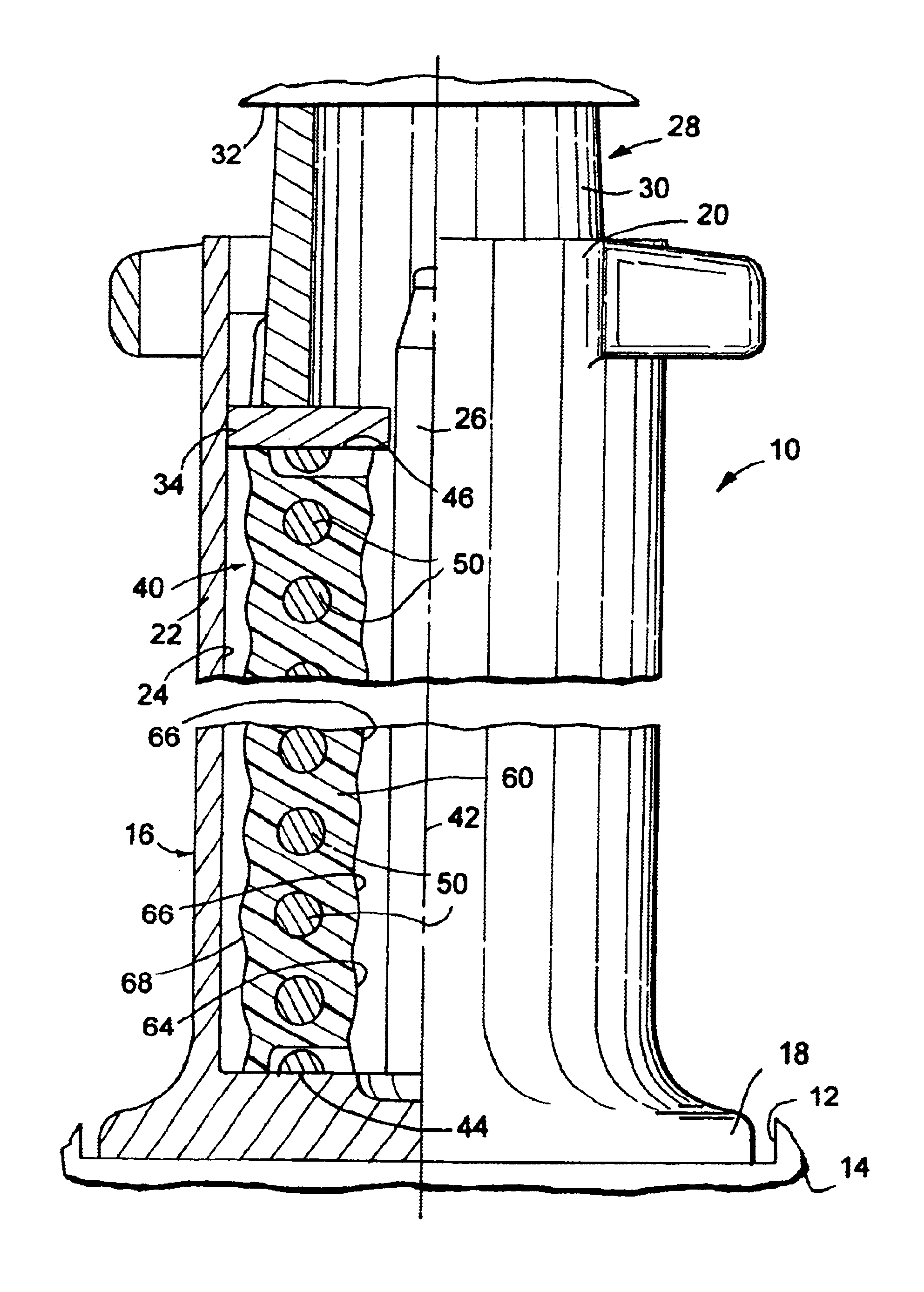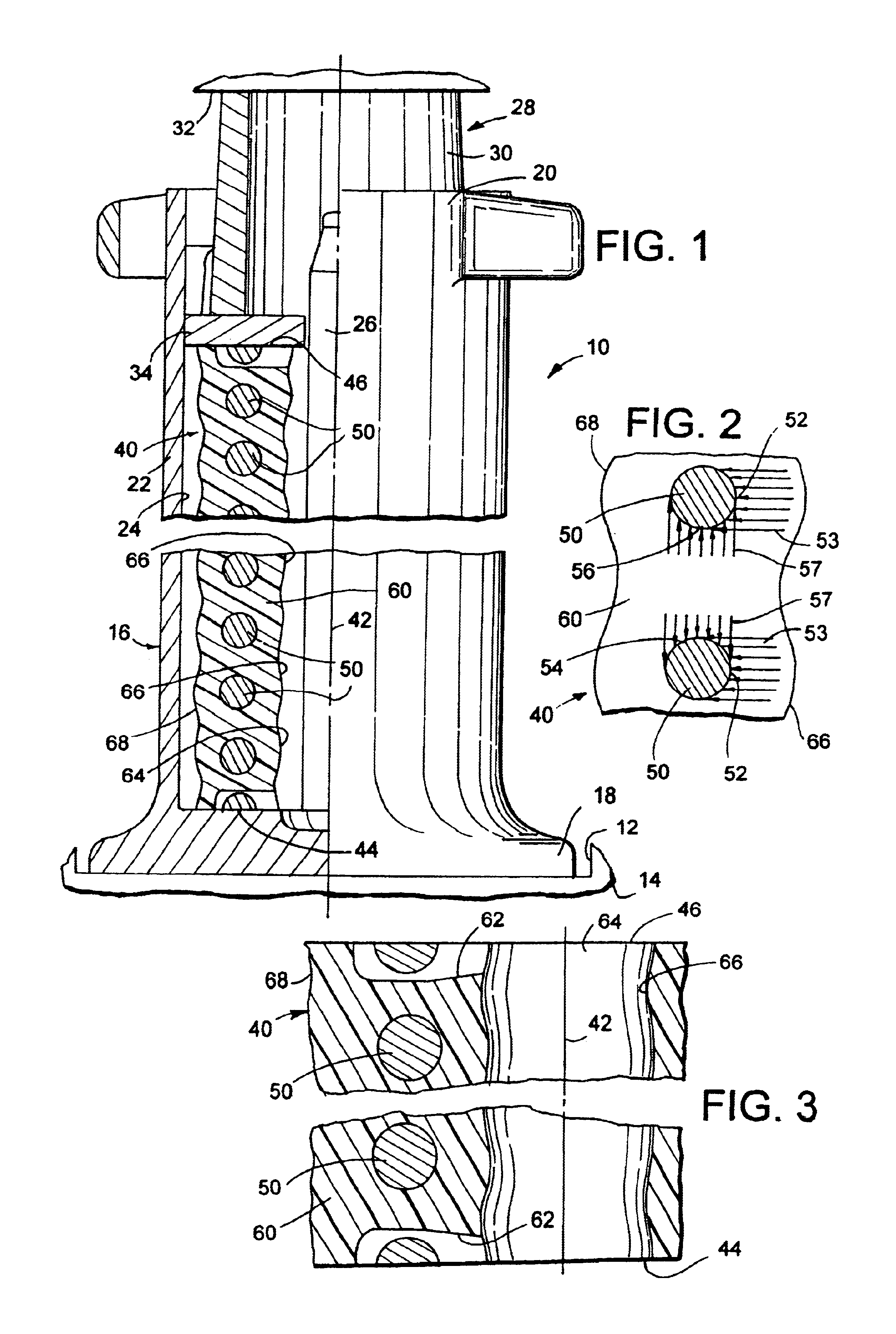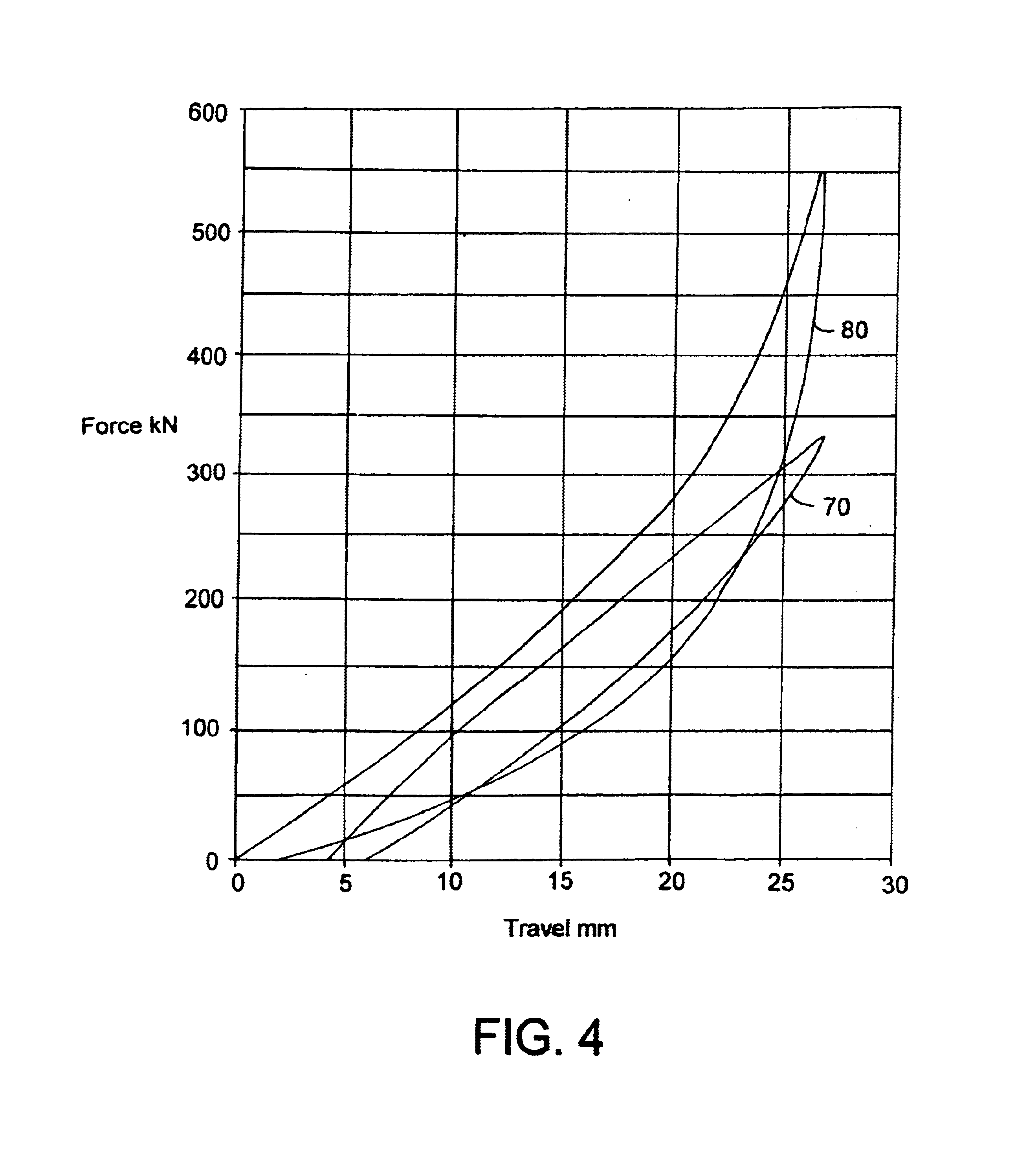Elastomeric spring assembly for a railcar and method of making same
a technology of elastomeric springs and rail cars, which is applied in the direction of mechanical equipment, machine supports, transportation and packaging, etc., can solve the problems of large energy and excessive resultant, the spring assembly must have great strength or it will easily fail under substantial loads, and the spring assembly utilizing a steel on steel friction interface, which is not suitable for some applications, and achieves the effect of enhancing the performance characteristics of the spring assembly
- Summary
- Abstract
- Description
- Claims
- Application Information
AI Technical Summary
Benefits of technology
Problems solved by technology
Method used
Image
Examples
Embodiment Construction
While the present invention is susceptible of embodiment in multiple forms, there is shown in the drawings and will hereinafter be described a preferred embodiment of the invention, with the understanding this disclosure is intended to set forth an exemplification of the invention which is not intended to limit the invention to the specific embodiment illustrated and described.
Referring now to the drawings, wherein like reference numerals indicate like parts throughout the several views, there is shown in FIG. 1 a railcar apparatus generally identified by reference numeral 10. As will be appreciated, the railcar apparatus 10 can take a myriad of designs and shapes without detracting or departing from the spirit and scope of the present invention. In the exemplary embodiment, apparatus 10 is shown as a railcar draft gear assembly typically accommodated within a pocket 12 on a conventional railcar, generally identified by numeral 14. It should be appreciated, the teachings and advanta...
PUM
 Login to View More
Login to View More Abstract
Description
Claims
Application Information
 Login to View More
Login to View More - R&D
- Intellectual Property
- Life Sciences
- Materials
- Tech Scout
- Unparalleled Data Quality
- Higher Quality Content
- 60% Fewer Hallucinations
Browse by: Latest US Patents, China's latest patents, Technical Efficacy Thesaurus, Application Domain, Technology Topic, Popular Technical Reports.
© 2025 PatSnap. All rights reserved.Legal|Privacy policy|Modern Slavery Act Transparency Statement|Sitemap|About US| Contact US: help@patsnap.com



